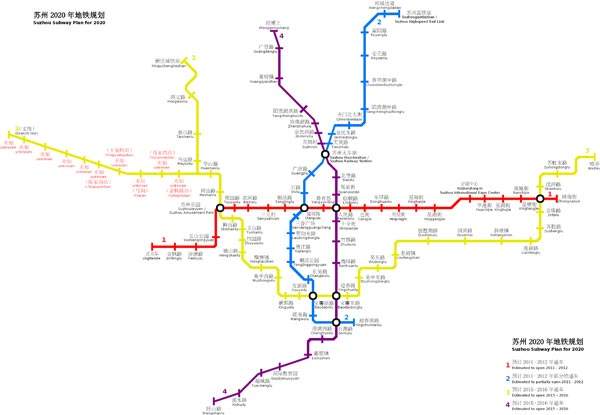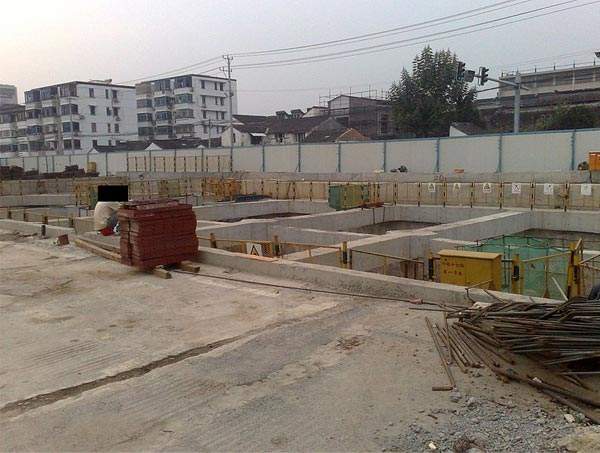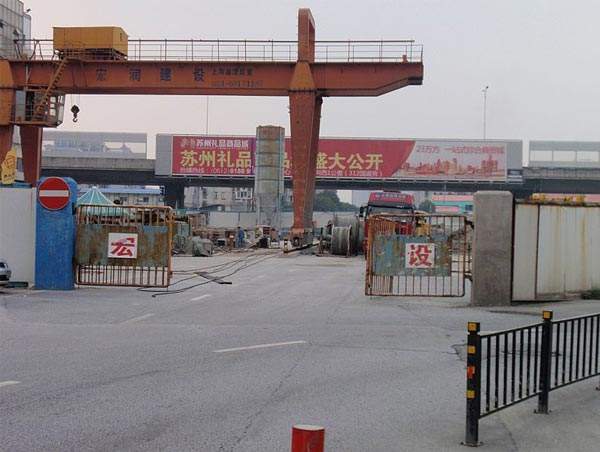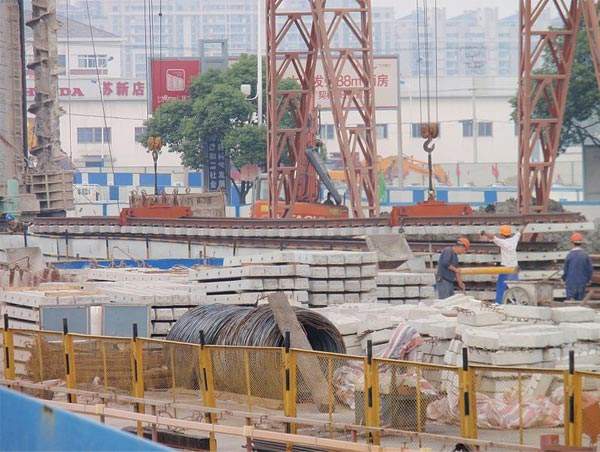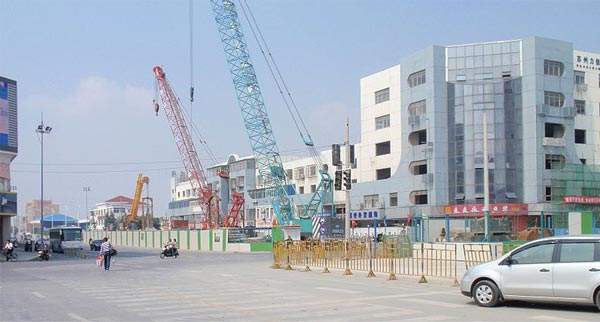Suzhou Metro is a rapid transit metro rail system serving the city of Suzhou in the province of Jiangsu in China. The system will be 140km long when completed. It will have initially have four lines, of which two (line 1 and line 2) are currently under construction. Two more lines are planned to be built in future.
Line 1 is planned to be opened in June 2012 and will cost an estimated $1.84n. It is expected to be used by 130,000 passengers.
Construction on line 2 began in December 2009 and is expected to be completed in 2014.
Line 3 will see start of its construction in 2012 and will be operational in 2016. Line 4 will be completed by 2020.
Background and objectives of the Suzhou metro project
Suzhou is a major industrial and tourist city located beside Shanghai municipality in China. It is a densely populated area and a growing tourist attraction.
A study of the city’s transport network was carried out by SYSTRA in 2001-02 to find an alternative transportation solution for coping with the city’s growing traffic.
A metro project comprising of two lines was framed initially and the lines were approved by the central government in 2008 (line 1) and 2009 (line 2). In 2009 the government, however, decided to revise and update the network plan to extend it up to six lines.
Four lines had been planned initially.
Suzhou’s metro project is aimed at providing the city with an efficient, faster and eco friendly means of transport. It will connect the whole city with lines running from east to west and north to south.
Line routes of the rapid transit metro rail system in Jiangsu
Line 1 of the Suzhou metro will run from Lingtianche in the west to Zhongnanjie in the east. It will be 25.74km long and will be totally underground, with 24 stations.
It will have interchanges at Suzhou Leyuan (Suzhou amusement park) and Xingtangjie (Xingtang Street) for line 3, Guangjinanlu (Guangjinan Road) for line 2 and Leqiao for line 4.
Line 2 will be 27km long and connect north and south parts of the city. It will extend from Suzhougaotiezhan to Yingchunnanlu, with 22 intermediate stations. One terminal of this line will be connected to the Beijing-Shanghai high-speed railway and the other end to south outer ring road in Wuzhong.
The line will have interchanges at Suzhou Huo Che Zhan (Suzhou railway station) and Guangjinanlu (Guangjinan Lu) for line 1, Baodaixilu (Baodaixi Lu) for line 3, and Shihulu (Shihu Lu) for line 4.
Line 3 will be a 43.5km stretch between Xinquchengtie Station and Weiting, with 31 stations in total. It will have interchanges at Huashan Road for line 3, Baodai West Road for line 2, Baodai East Road for line 4, plus two interchanges at Suzhou amusement park and Xingtang Street for line 1. A branch of line 3 is also planned to stretch westwards from the Huashan Road station.
Line 4 will be a 31.2km stretch from Wanggengshang to Wangshan Road, with 22 stations in total. It will have interchanges at Renminlu for line 1, Baodaidonglu for line 3 and Shihulu for line 2.
Construction of the Chinese industrial city’s four line metro
A feasibility study for line 1 was completed in November 2003. Overall design was ready by March 2004. Tenders were called in March 2008 and contracts were awarded. Construction began in 2008 and was almost completed by 2011.
Excavation for two tunnels of length 23km was done using 14 tunnel boring machines. Chinese Seismic Intensity Scale level six standards are maintained in the construction of stations and tunnels.
Rolling stock on the proposed 140km long Suzhou metro
Line 1 will employ 24 trains, which will have operating speeds of 35km/h. The contract to supply the trains was awarded to China South Locomotive and Rolling Stock (CSR) in 2010. As of December 2011, 21 metro cars had been delivered and trail runs were being executed.
On March 2012 a $79.03m contract was awarded to Nanjing SR Puzhen Rail Transport (NPRT) for 23 five-car Type B2 trains for line 2. The trains will be delivered between 2013 and 2014.
NRPT is a joint venture between CSR and Singapore-based aluminium alloy component supplier Midas Holdings.
Signalling and communications along the four lines
Siemens was awarded a $26.6m subcontract by the Nanjing Research Institute of Electronic Technology (NRIET) on behalf of the Suzhou metro to supply train guard MT communication based train control (CBTC) signalling, with an air link, for line 1.
The contract also includes supply of a free propagation radio WLAN system, Sicas ECC electronic interlocking system and AzS axle counters.

